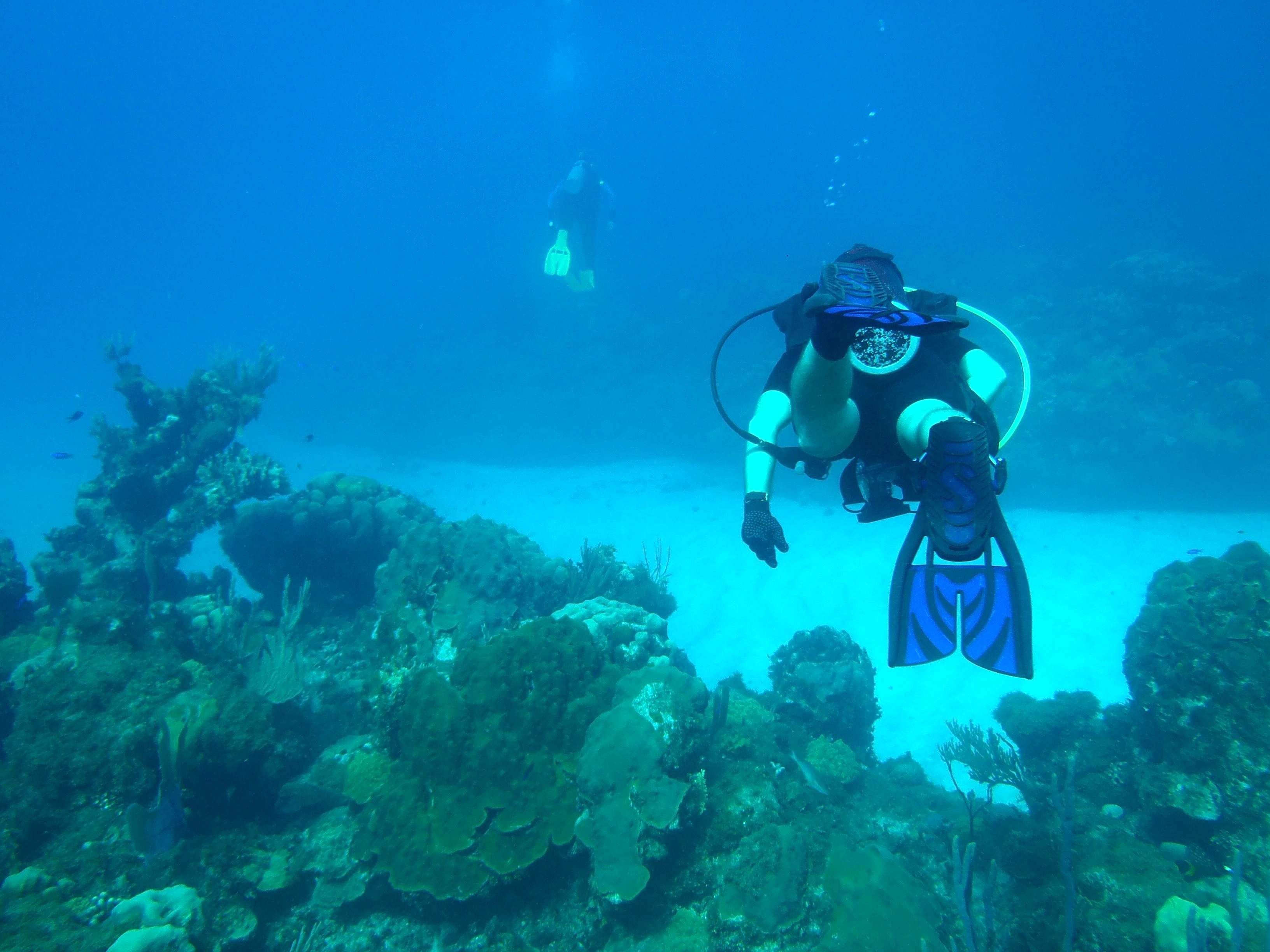Just offshore, around the bay and sea coastlines, U.S. Naval Station Guantánamo Bay is ringed with reefs of large colonies of diverse coral species. Because so many of the coral stand in shallow water, base residents can easily float with a mask and snorkel on the surface, looking down as little as 20 feet through the crystalline water at the spur-and-groove reef formations: ridges of coral broken by open pathways of white sand. In the blue tone of the sea, the hills of coral resemble aquatic forests, populated by numerous types of vibrantly-colored parrotfish, squid, stingrays, barracudas, damselfish and reef sharks.
When coral biologist Craig Downs first considered going to Guantánamo Bay four years ago to conduct research for the National Oceanographic and Atmospheric Administration (NOAA), he hoped to find coral at GTMO as healthy and abundant as what he had heard existed in southern Cuba. Among biologists studying both marine and terrestrial wildlife of the Caribbean, Cuba is seen as a holy grail for research. Many animal and plant species, including rare and endangered varieties, have been able to flourish in Cuba—because of limited tourism and development, caused mainly by the island's entrenched economic difficulties, and government regulations protecting wildlife, such as fishing limits and the establishment of national conservation areas.
While Downs considered going through United States and Cuba governmental channels to conduct his research in Cuba proper, he worried that this could take up to a decade. "Coral reefs are dying in the Caribbean," he says. "We don't have ten years to wait."
Every year, more scientists apply to conduct research at GTMO than are granted permission, says base environmental director Mike McCord, in part because the Navy wants to ensure that research benefits not just the careers of the scientists themselves, but also the larger conservation work of the military and the base. Since being granted permission in 2007 to study the endangered acropora palmata, or elkhorn coral, Downs has come to the base two to three times per year. "It's like finding paradise lost," he says, lamenting the difficulty of even encountering healthy stands of elkhorn coral elsewhere in the Caribbean.
Every August, just before the corals spawn, Downs returns to GTMO to sample the elkhorn coral for NOAA, in order to document the health of the area's coral to establish a baseline against which to compare the often less healthy coral in the Florida Keys (where reef health has deteriorated dramatically since the 1970s) and on other Caribbean islands. With that comparison, scientists can more accurately determine the causes of coral damage.
Over several days, Downs' team surveys and samples from several beaches on the base. First they snorkel over a site to conduct reconnaissance, dropping lead weights to tag the sites where they will sample, and then return with scuba gear the next morning to extract coral tissue to test for the baseline study. But along the rocky Guantánamo coast, wave action can make even entering the water to scuba dive dangerous, and some days the team heads out only to return soon after without having been able to sample.
Even with the Navy restrictions on access to many of the base beaches, coral at Guantánamo faces natural threats. With ever-warming sea temperatures in the Caribbean during summers, the base has experienced coral bleaching over the past several years, which occurs when corals become stressed, and can cause long-term coral damage and death.
And more recently, the non-native Pacific lionfish has invaded the base waters, devouring large quantities of the smaller fish that live in and clean coral reefs. (How exactly lionfish came to the Caribbean and Atlantic waters is unknown, though one popular theory is that Floridians dumped lionfish from their aquariums during power outages after Hurricane Andrew in 1992.) With a particularly large population of scuba divers on base, many residents pitch in during periodic lionfish rodeos, catching and killing the lionfish to prevent further damage to the reefs. But even so, on one outing at Cuzco Beach, which has restricted access and is not open to the public, Downs counted 14 lionfish, which have no natural predators in Caribbean waters.
